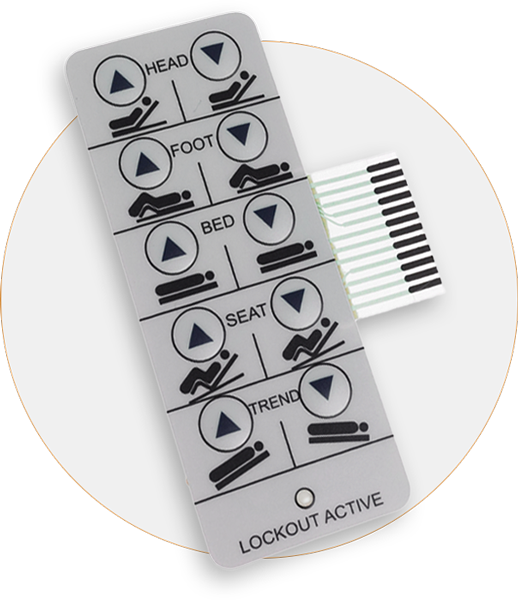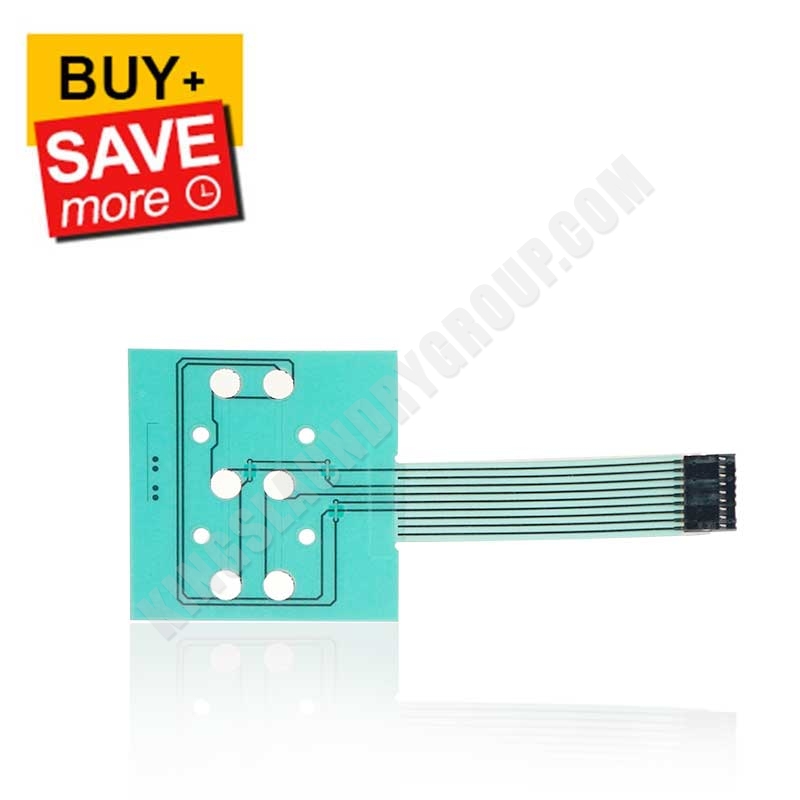The Role of a Membrane Switch in Modern Touch Interfaces and Controls
The Role of a Membrane Switch in Modern Touch Interfaces and Controls
Blog Article
Understanding the Capability of Membrane Layer Changes for Interface Gadget
The capability of membrane layer changes represents a substantial improvement in individual interface style, integrating efficiency with visual adaptability. As industries progressively focus on individual experience, understanding the nuances of membrane switch technology becomes crucial.
What Are Membrane Layer Buttons?
Membrane layer buttons are cutting-edge interface devices that facilitate customer interaction with electronic tools. These functional components contain numerous layers, consisting of a graphic overlay, spacer, and a printed circuit layer. The design enables a seamless assimilation right into various digital devices, improving both the aesthetic and practical elements of user interfaces.
Membrane layer buttons are frequently utilized in a large range of applications, from family home appliances to industrial equipment and clinical gadgets. Their building and construction usually includes a slim profile, making them a suitable option for small styles. The tactile responses provided by these switches can be crafted to meet details individual preferences, guaranteeing efficient interaction in between the user and the tool.
Toughness is an additional substantial advantage of membrane layer switches, as they are immune to dust, wetness, and chemicals, which boosts their lifespan sought after atmospheres. Furthermore, these switches can be tailored in terms of form, dimension, and visuals style, enabling branding and user-specific functions. Generally, membrane changes represent a useful service for boosting user experience in digital gadgets, combining performance with visual appeal in an effective way.
How Membrane Switches Job
Operating on a simple concept, membrane switches use a layered building and construction to register individual input successfully. Each button includes several layers, consisting of a printed circuit layer, a spacer layer, and a leading graphic layer, which are developed to collaborate seamlessly. When a customer presses the leading layer, it compresses the spacer layer, bringing the conductive elements of the circuit layer into contact with each various other.
This call creates a shut circuit, signaling the gadget to carry out a particular feature. The design enables for different configurations, consisting of tactile responses, which can boost the user experience by providing a physical feeling upon activation. The products utilized in membrane buttons often consist of versatile substratums, such as polyester or polycarbonate, which make sure sturdiness and durability versus damage.

Trick Benefits of Membrane Layer Buttons

Another significant benefit is their compactness. Membrane buttons are slim and lightweight, which allows producers to save space in their gadgets without compromising performance. This feature is especially useful in applications where weight and volume are crucial considerations.
In addition, membrane buttons are immune to dirt, moisture, and chemicals, improving their resilience. This durability extends their lifespan and lowers the need for frequent replacements, causing expense savings in time.
In addition, the responsive responses supplied by membrane layer switches can be optimized to improve customer interaction. They can consist of functions such as elevated switches or distinct clicks, enhancing use and user experience.
Applications Throughout Industries
Interface tools making use of membrane buttons are widespread in a wide variety of markets, showcasing their versatility and functionality. Membrane Switch. In the medical industry, membrane layer switches are indispensable to devices such as analysis tools and client monitoring systems, where their resilience and simplicity of cleansing are vital for keeping health standards. In the vehicle market, these buttons are employed in dashboard controls and infotainment systems, providing a smooth and contemporary interface for customers.
In addition, the consumer electronic devices industry take advantage of membrane layer switches in devices and handheld devices, where small style and user-friendly interfaces enhance individual experience. Industrial applications also utilize membrane changes for control panels in equipment and automation systems, stressing their effectiveness and resistance to severe environments.
In the aerospace and protection sectors, membrane layer buttons are used in cockpit controls and devices, where reliability and performance under extreme conditions are extremely important. Furthermore, the pc gaming sector progressively integrates membrane layer buttons in controllers and game machines, contributing to an appealing user experience. Generally, the flexibility of membrane changes enables their widespread usage throughout many sectors, emphasizing their value in modern-day this contact form interface style.
Future Fads in Membrane Layer Change Modern Technology

Additionally, using sophisticated products, such as polycarbonate and polyester movies, is expected to climb, giving enhanced durability and resistance this article to ecological stressors. These materials add to the total durability of membrane switches, making them suitable for harsher commercial applications.
Moreover, the consolidation of clever innovation, including IoT connectivity, will certainly enable membrane layer switches to interact with various other tools and systems, facilitating an extra interactive customer experience. This pattern aligns with the growing demand for smart devices across different industries, from medical care to consumer electronic devices.
Last but not least, personalization choices are expected to increase, allowing manufacturers to produce bespoke services customized to specific user requirements and choices. These developments will certainly position membrane layer switches as essential elements in the development of interface technology.
Conclusion
Finally, membrane layer changes stand for an essential development in individual interface modern technology, using a reliable and versatile option for diverse digital applications. Their layered construction facilitates compact layout, while features such as responsive comments boost customer interaction. The toughness against environmental elements further strengthens their energy throughout several markets. As developments in product scientific research and touch noticing innovations continue, the functionality and applicability of membrane layer buttons are anticipated to broaden, enhancing their importance in contemporary electronic gadgets.
Report this page